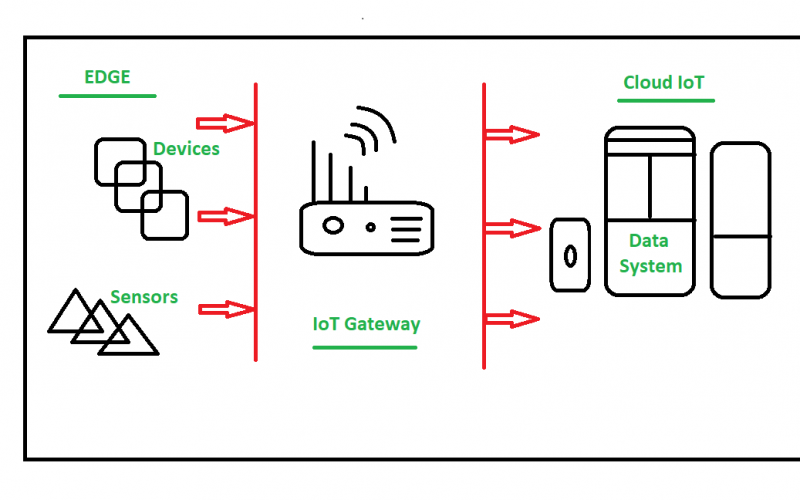IoT gateways and edge computing are essential components of IoT architectures that enable efficient data processing, communication, and connectivity. Let’s explore them further:
IoT Gateways: IoT gateways act as intermediaries between IoT devices and the cloud or central server. They serve multiple purposes, including protocol translation, data aggregation, filtering, and local processing. Here are some key functions of IoT gateways:
- Protocol translation: IoT devices often use different communication protocols. Gateways bridge the gap by translating data between different protocols, enabling seamless communication between devices and the cloud.
- Data aggregation: Gateways collect data from multiple IoT devices within a local network or deployment area. They aggregate and organize the data before forwarding it to the cloud or performing local processing.
- Filtering and preprocessing: Gateways can filter and preprocess data locally to reduce the amount of data sent to the cloud. This helps in optimizing bandwidth usage, reducing latency, and improving overall system performance.
- Connectivity management: Gateways manage the connectivity of IoT devices by handling network protocols, security, authentication, and device registration. They ensure reliable and secure communication between devices and the cloud.
- Edge analytics: Some gateways are equipped with computational capabilities to perform analytics and extract valuable insights from data at the edge. This enables real-time decision-making and reduces the dependency on the cloud for data processing.
- Edge Computing: Edge computing refers to the practice of processing and analyzing data closer to the source, at the edge of the network, rather than relying solely on centralized cloud infrastructure. Here are the key aspects of edge computing in IoT:
- Reduced latency: By processing data locally at the edge, edge computing reduces latency and enables real-time or near-real-time decision-making. This is critical for time-sensitive applications that require immediate responses.
- Bandwidth optimization: Edge computing helps reduce the amount of data that needs to be transmitted to the cloud. By performing data filtering, aggregation, and preprocessing at the edge, only relevant and actionable data is sent to the cloud, optimizing bandwidth usage.
- Enhanced privacy and security: Edge computing allows sensitive data to be processed locally, reducing the risk of data breaches and ensuring better privacy and security. Only aggregated or anonymized data is transferred to the cloud, minimizing the exposure of sensitive information.
- Offline operation: Edge computing enables devices and applications to operate even when there is limited or no connectivity to the cloud. Local processing and decision-making capabilities at the edge ensure continuity and resilience in IoT deployments.
- Scalability and flexibility: Edge computing allows for distributed computing resources, enabling scalability and flexibility in IoT deployments. It enables the deployment of compute resources closer to the devices, reducing reliance on centralized infrastructure.
Overall, IoT gateways and edge computing play crucial roles in optimizing data processing, communication, and decision-making in IoT systems. They enable efficient utilization of network resources, reduce latency, improve security, and enhance overall system performance.
SHARE
